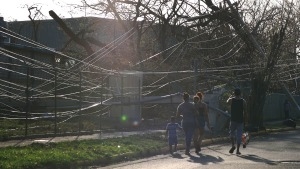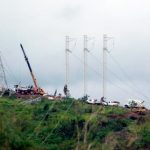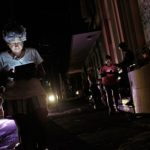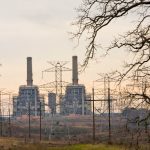How Smart Grid Technology Could Help Puerto Rico
A week after Puerto Rico was struck by Hurricane Maria, nearly all of the U.S. territory’s residents are still without power. It will take years to recover from the disaster, but experts hope Puerto Rico’s future electrical grid will be more resilient in the face of the next powerful storm to hit the island. They’re advocating for more distributed power generation, less reliance on imported oil, and a digital smart grid letting workers locate trouble in real time. But with Puerto Rico already struggling with massive debt and a decade-long recession before the storm, the future is still far from certain.
Maria was the strongest storm to hit Puerto Rico in decades, destroying power lines across the island. In some areas, outages are predicted to continue for months.
“Generation seems to be in good shape, but the transmission and distribution is pretty damaged,” says Mike Hyland, senior vice president of engineering services at the American Public Power Association, a group of government-owned utilities that is assisting in the recovery. “We haven’t completed the full damage assessment, but all speculation is it’s pretty bad.”
Related Video: Here’s What Could Help Fix Puerto Rico’s Failed Power Grid
Puerto Rico’s power plants are concentrated in the south, near ports where the oil and diesel fuel they rely on is imported. High wires bring power across the island’s mountainous interior to population centers like San Juan. Replacing those remote lines and poles could mean cutting new roads or even using helicopters, says Cate Long, founder of Puerto Rico Clearinghouse, an investor research firm focused on the territory.
In the continental United States, equipment like cables, poles, and transformers can quickly be brought in by truck. But for Puerto Rico and other storm-ravaged islands in the Caribbean, replacement parts and the workers to put them in place can only arrive by plane or ship, Hyland says. Travel by barge from the mainland can take days, and flights compete for airspace with ongoing emergency operations.
“This is going to be a long task for everyone, so we need patience,” says Hyland.
“Degraded, Unsafe, And Unreliable”
Puerto Rico’s electrical infrastructure, run by the government-owned Puerto Rico Electric Power Authority, was in poor shape even before the storm. The utility entered into a bankruptcy-like process in July amid the territory’s ongoing debt crisis. A consulting firm retained by the Puerto Rico Energy Commission wrote last year that PREPA customers experienced outages at rates four to five times higher than the average U.S. power consumer. A fiscal plan the power authority filed in April included photos of rusted and otherwise damaged equipment deemed “degraded, unsafe, and unreliable.” And just a year ago, a power plant fire plunged much of the island into a multiple-day blackout.
“PREPA’s generation, transmission, and distribution systems are falling apart and reliability is suffering,” according to the consultants’ report.
Congress is considering additional aid to the island, which effectively can’t raise money through traditional borrowing amid its fiscal crisis, and PREPA’s major bondholders have offered a onetime $1 billion loan to the power authority. That, they say, could help it unlock matching funds from the Federal Emergency Management Agency.
Experts say the first priority will be simply restoring power to the areas that have lost it. But the next phase of the recovery could involve building a more resilient grid to protect against storms to come. That’s a challenge facing not only Puerto Rico, but much of the world. Climate change is widely believed to increase the frequency and severity of storms and other disasters like drought-fueled wildfires, all of which can cause widespread electrical outages.
“The North American Electric Reliability Corporation (NERC) reported that the number of so-called major disturbances increased dramatically from 1992 to 2009,” according to a report issued last year by the Electric Power Research Institute.
Utilities and their regulators are also increasingly aware of manmade risks to the system, including terrorism and cyber attacks. And, according to the EPRI report, the effects of outages on power consumers have arguably grown more severe, since people are more dependent on digital tools like smartphones for day-to-day life.
After Wilma, Florida Made Its Grid More Resilient
Since Hurricane Wilma struck Florida in 2005, utilities there have installed digital smart grid technology that allows them to detect outages, and know if repairs worked, through internet of things-style sensors. That was part of efforts by Florida utilities to make the state’s grid more resilient. Even though more utility customers lost power after Hurricane Irma earlier this month, service came back more quickly than it did after Wilma, according to a report from the federal Energy Information Administration.
Smart grid technology often includes digital electric meters equipped with network connectivity. They can be used during normal operations to easily adjust consumer electricity pricing from peak to off-peak demand hours. And during an outage, they can let repair crews know instantaneously where service is down on a building-by-building level. That could help recovery efforts from future outages in Puerto Rico or elsewhere, says Mark McGranaghan, vice president for integrated grid, at the Electric Power Research Institute.
“Rather than send a crew out every time to look at every single branch element in the circuit and the customers on the circuit, we’re getting feedback immediately from the sensors,” says McGranaghan.
Tablets and smartphones let workers see visualizations of where repairs are needed, along with other pertinent information useful to get the job done quickly.
“For example, as a field technician aims the hand-held device camera at a pole structure, the screen displays the camera image, with the one-line circuit drawing overlaid, and all of the pertinent asset data available from [a geographic database],” according to the EPRI report.
Puerto Rico could also potentially benefit from recent advances in solar energy technology, including so-called microgrids. Those combine local solar and generator power with battery storage to keep small communities or critical institutions online even if the larger grid fails, he says. Microgrids helped some universities, labs, and other institutions stay powered when Hurricane Sandy struck the New York area in 2012, and their success then has since led to wider adoption in the Northeast.
“It might not have full power capabilities and power everyone’s air conditioner, but essential services could be managed with that power supply locally until that grid is rebuilt,” McGranaghan says.
Rolling out more distributed solar generation capabilities could also ease Puerto Rico’s dependence on imported oil, says Julie McNamara, an energy analyst for the Union of Concerned Scientists. The Trump administration faced criticism for a delay in waiving rules under the Jones Act, which restricts shipments between U.S. ports to a small number of U.S.- built and crewed ships, in order to let other vessels bring fuel to Puerto Rico.
“Right now, we’re seeing in Puerto Rico the ability to get access to fuel supply is extremely limited,” McNamara says.
And even during normal conditions, the island’s petroleum-heavy power infrastructure is especially vulnerable to shifts in oil prices.
On a more basic level, steps like replacing electrical poles with sturdier materials like concrete or moving lines underground can help withstand high winds and speed recovery after a storm, says McGranaghan. But those measures, which can be expensive, aren’t always the best allocation of limited funds, according to a 2014 Union of Concerned Scientists report.
“Measures like burying transmission lines or elevating or relocating equipment can help reduce the risk of outages, but these approaches are often expensive and may not be the most cost-effective long-term solution,” according to the report.
Exactly what shape the post-Maria electrical system will take will depend on a number of stakeholders, including the power authority, its creditors, and the federal and local governments, McNamara says.
“I think it should be unacceptable that the electric utility is simply rebuilt to the state that it was,” she says. “It will take work. It will take persistent pressure to rebuild for the future.”
Fast Company , Read Full Story
(64)













